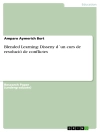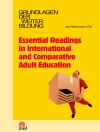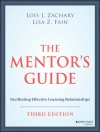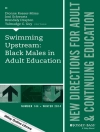Explore the multiple ways adults learn through their bodies.Embodied or somatic learning is a way of learning that relies onthe body’s knowledge. Our most basic form of learning inchildhood is preverbal; however, traditional schooling forces us tocheck our bodies at the door, requiring us to sit at a desk andraise our hands, focusing primarily on cognition to the exclusionof other ways of knowing. By the time we reach adulthood, ’being in our bodies’ is a foreign concept and a sourceof discomfort for many of us.
This volume challenges the dominant paradigm of how knowledge isconstructed and shared. Embodied learning is examined through avariety of practice contexts, including higher education, communityeducation, health care, and the workplace, and through multiplemethods, including dance, theater, and outdoor experientialeducation.
This is 134th volume of the Jossey-Bass quarterlyreport series New Directions for Adult and Continuing Education. Noted forits depth of coverage, it explores issues of common interestto instructors, administrators, counselors, and policymakers in abroad range of adult and continuing education settings, such ascolleges and universities, extension programs, businesses, libraries, and museums.
Innehållsförteckning
EDITOR’S NOTES 1
Randee Lipson Lawrence
1. Intuitive Knowing and Embodied Consciousness 5
Randee Lipson Lawrence
This article describes the relationship between intuition andembodied knowing, including how embodied knowing comes into ourconsciousness. It sets the stage for the variety of practicecontexts and strategies that are discussed in this volume.
2. Embodied Learning and Patient Education: From Nurses’Self-Awareness to Patient Self-Caring 15
Ann L. Swartz
This article presents embodied learning from a neurobiologicperspective as a naturally occurring process in patient education.It describes how nursing students learned to trust their ownbodies, which led to self-empowerment and extended to patientcare.
3. Embodied Learning at Work: Making the Mind-set Shift from Workplace to Playspace 25
Pamela Meyer
Creative play and improvisation can transform organizationsinto dynamic spaces for learning, promoting collaboration, andcreating problem solving.
4. Embodying Women’s Stories for Community Awareness and Social Action 33
Yolanda Nieves
This article describes a case study involving collectingstories of Puerto Rican women and embodying them through communityperformance. In performing the stories, repressed and subjugatedknowledge was unleashed.
5. Outdoor Experiential Education: Learning Through the Body43
Eric Howden
In adventure education, one experiences a series of physicalchallenges designed to improve self-confidence and create cohesiveteams. As thinking one’s way through the obstacles often promotesanxiety, one learns to rely on one’s body.
6. Dance as a Way of Knowing 53
Celeste Snowber
Dance is a method of inquiry that invites us to imagine newworlds. This article takes an in-depth look at dance and bodymovement and the implications for teaching and learning in avariety of disciplines.
7. Embodied Knowledge and Decolonization: Walking with Theater’s Powerful and Risky Pedagogy 61
Shauna Butterwick, Jan Selman
Popular theater is an educational tool that empowersindividuals to see themselves as creators of their own stories.Mind, body, and emotions come together as anti-oppressiveforces.
8. Coming Full Circle: Reclaiming the Body 71
Randee Lipson Lawrence
This concluding article integrates and synthesizes themes fromthe previous articles and highlights the lessons learned.
Index 79
Om författaren
Randee Lipson Lawrence is the author of Bodies of Knowledge: Embodied Learning in Adult Education: New Directions for Adult and Continuing Education, Number 134, published by Wiley.












